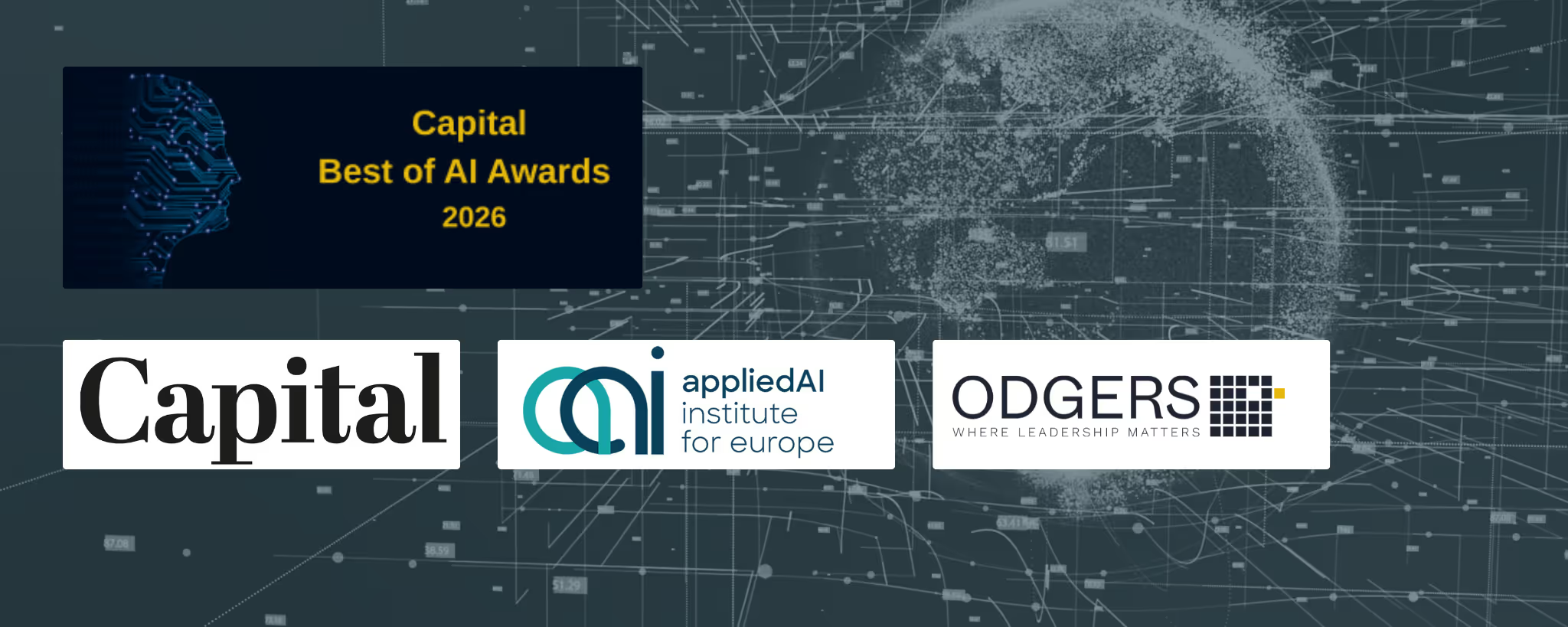The German business magazine Capital has shortlisted LabV in the “Best of AI 2025” – AI Use Case category. The award recognises applications that deliver impact over hype and use AI responsibly. For R&D teams, that means making material data usable, comparing variants consistently, and making better-informed product development decisions.
Why the shortlist matters
In the AI Use Case category, Capital assesses three dimensions: strategic relevance and degree of innovation, measurable everyday impact, and governance & compliance with particular attention to the EU AI Act.
LabV was founded within the NETZSCH Group and draws on over 150 years of industrial experience and more than 60 years in materials analytics. “Our guiding idea is an industry that rethinks materials development with data, AI and intelligent workflows—connected, efficient, future-ready,” says CEO Dr Stefan Thomas. “With LabV, we are establishing Material Intelligence as a new software category for industry: material data becomes truly usable, decisions more robust, and development cycles shorter. From industry, for industry.”

With LabV, we are establishing Material Intelligence as a new software category for industry: material data becomes truly usable, decisions more robust, and development cycles shorter. From industry, for industry.“
Three proofs of impact & yresponsibility
1) Measurable results, not promises Wirkung statt Versprechen
Across projects, the effort required for data capture, search and preparation falls by up to 60%. Development cycles shorten; decisions become more transparent because comparable data states replace version chaos. This is possible because LabV brings together measurements, formulations and tests with the right context (process, material, variants). The result: reliable analyses, fewer duplicate tests, less scrap, and data-driven decisions in R&D.
2) Governance & transparency by design
The platform is built on a GDPR-compliant architecture with role-based access control (RBAC), logging and data minimisation. Models are explainable: where classical ML methods provide better controllability, they are prioritised; generative components are used selectively and with documentation. Documentation and traceability are not add-ons—they are part of standard operations.
3) Anticipating the EU AI Act
The EU AI Act is the EU’s first comprehensive AI law and regulates AI on a risk-based basis. Among other things, it requires transparency, documentation and human oversight. LabV has built-in routines for transparency, documentation and validation. Risk management follows recognised standards (e.g. BSI IT-Grundschutz/200-3) and addresses, among other aspects, misinterpretation, unauthorised disclosure and model drift; measures are continually updated as regulatory guardrails become more concrete.
What Material Intelligence delivers in practice
Material Intelligence treats industrial data as a strategic asset. The approach is not “more visualisation,” but making data in R&D genuinely usable—with context, consistency and comparability, ready for fast analysis.
- Connect: Instruments, test rigs, methods, ERP—a continuous data flow instead of silos.
- Compare: Versions, variants and parameters become comparable, not merely searchable.
- Understand: AI-supported analyses make patterns and deviations transparent and auditable.
- Decide: Decision-ready insights instead of dashboards alone.
Outcome: Less time spent searching and preparing data, more robust comparisons, and shorter loops from idea to reliable conclusion.
A concise case from R&D practice
In one project, material data—such as rheology and thermal analysis reports—were scattered across folders and systems. Parameters were inconsistent, making variant evaluation laborious. Data sources were connected, shared templates introduced, and a comparison logic for versions, variants and parameter normalisation established. Instead of a dashboard view alone, there is now a decision view that enables variant comparisons in a few steps. The effect: around 60% less preparation effort. Decisions for the next iteration are made faster and, crucially, on a data-driven basis. For more detail, see our white paper.
Conclusion & next steps
Material Intelligence makes data usable—enabling faster, more transparent decisions in R&D. If the goal is to spend less time on preparation and more time deciding, comparable data foundations matter more than adding yet another standalone tool.
If you’d like to take a closer look, we’re happy to provide a short, informative walkthrough of what data-driven decisions look like in practice and how they move R&D forward.
Author: Dr. Marc Egelhofer
